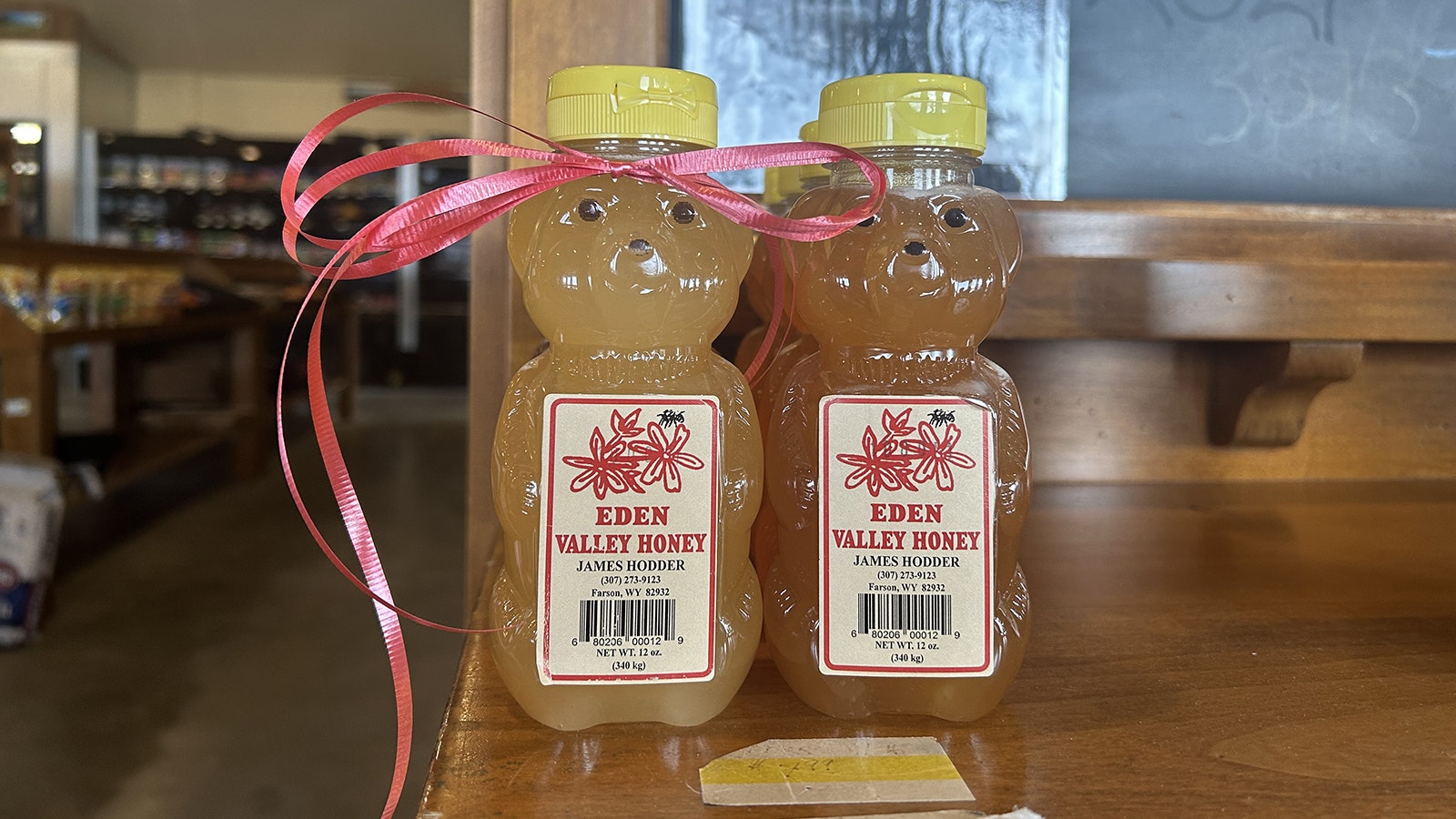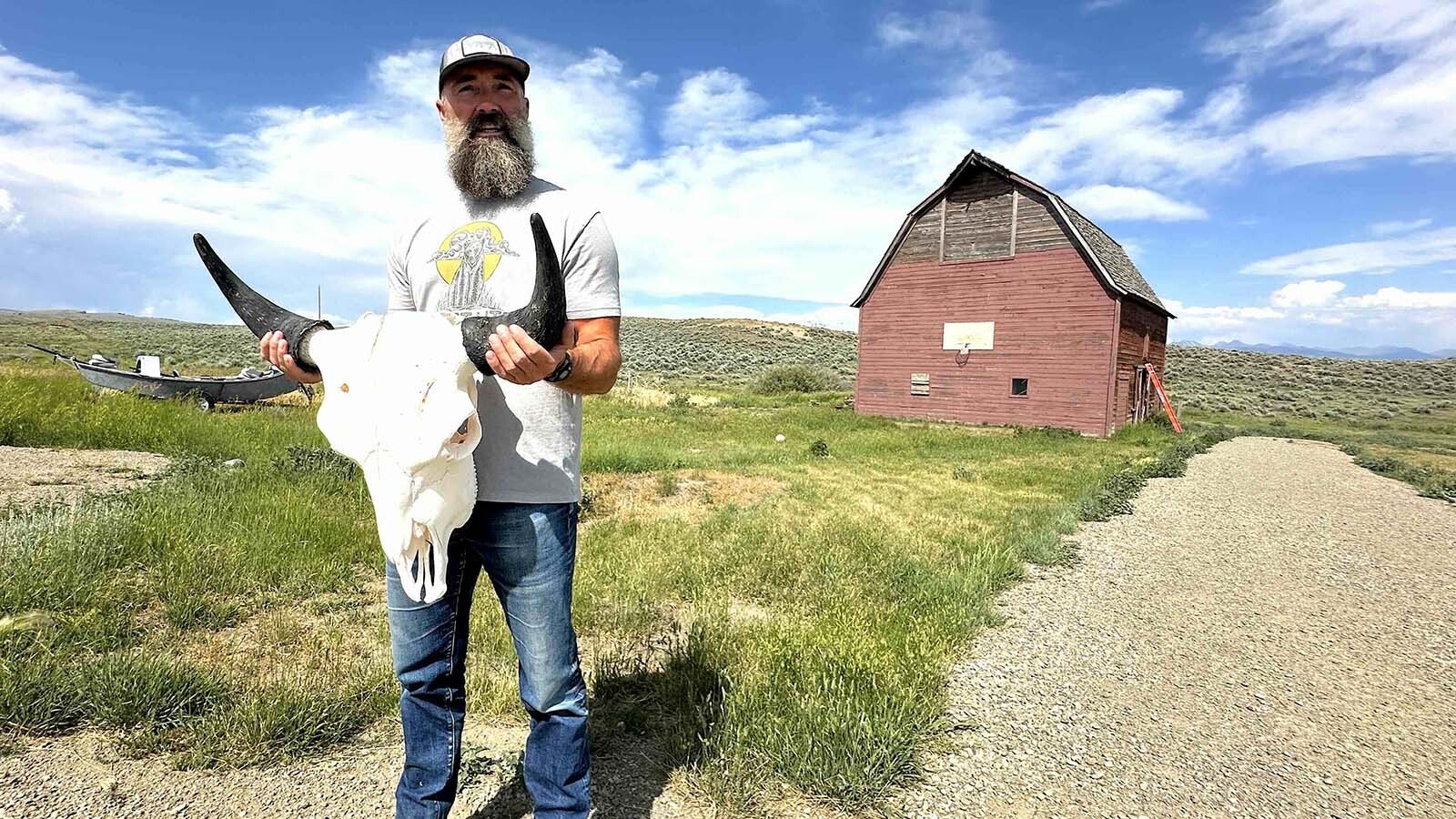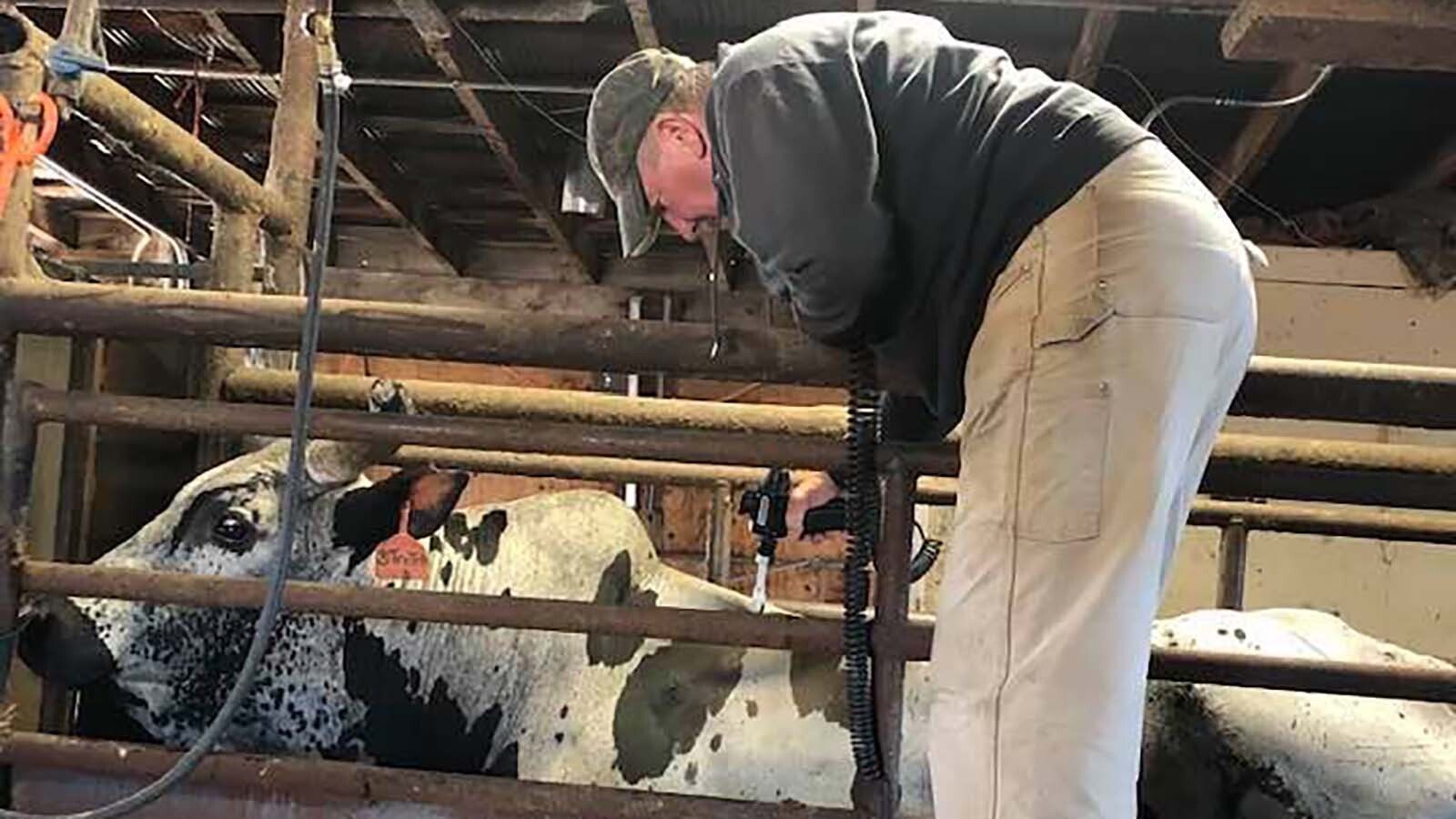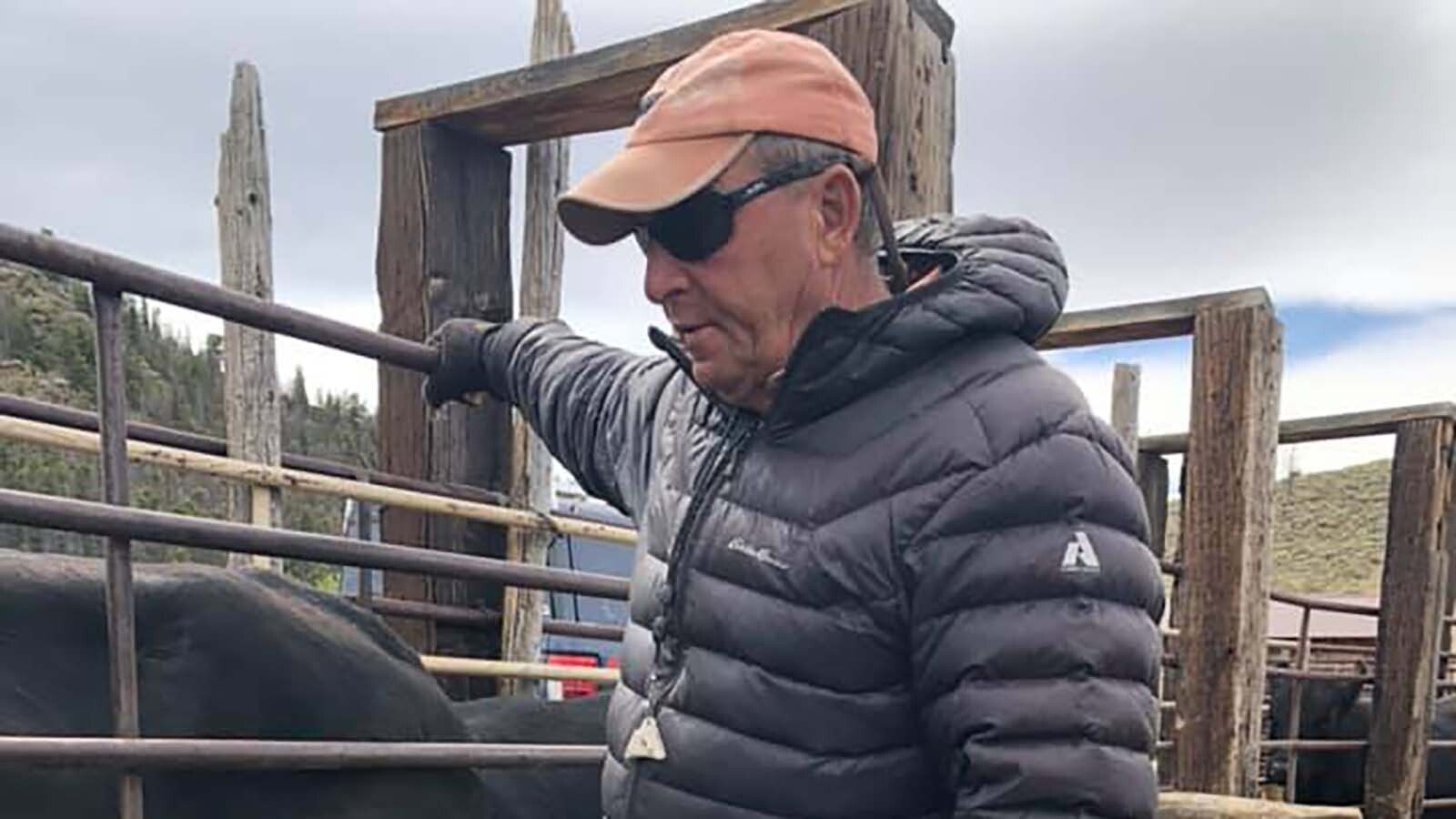To find Jim Hodder, owner of Eden Valley Honey, drive east on Haystack Butte Road about a mile and a half, then turn right at the big cottonwood stump.
Beyond the stump, about a dozen white-faced ewes — lambs in tow — are loose among a maze of corrals and outbuildings.
Hodder, 78, sits down on a diamond plate toolbox to take a load off and explain how he built a premium honey business in Sweetwater County over the past 50 years.
A bum lamb nibbles on a piece of orange bailing twine at his feet, reluctant to leave his side. In the background, a tiger-striped barn cat dives into a pile of straw and comes out with a fat mouse.
Hodder is a friendly fellow, but he’s lukewarm at best about being featured by Cowboy State Daily. That’s because every drop that comes out of his honey processing plant (aka, the honey house) is already spoken for.
Publicity is the last thing he needs.
Fine Honey Is Like Fine Wine
“Honey is a little bit like wine,” he said. “Not everyone’s palate is the same, but most people like the lighter-colored, sweeter honey. Some honey tastes sweet, but it will have an aftertaste. We don’t get that here and that’s one reason why our honey is so popular.”
Hodder started propagating bees in the early 1970s because he wanted to be more self-sufficient. Most of what he eats and feeds his family comes from his farm. He also raises laying hens, raises and butchers his own beef and lamb, and grows vegetables in a greenhouse.
Another important factor that sets Eden Valley Honey apart is the roughly 2.4 million bees working overtime to haul in the nectar from alfalfa and sweet clover in this part of north Sweetwater County.

Better Bees
In more temperate climates, bees have months to do their work. But at this elevation (6,580 feet) the season is short, and plants only produce nectar for about six weeks. When nighttime temperatures drop below 50 degrees, plants don’t produce much nectar, Hodder said.
The bees must be in good shape when they arrive because they don’t have much time to complete their important work.
In his first year, Hodder said he had three hives that yielded about 200 pounds of honey. Over the years his production has increased to about 20,000 pounds a year.
Honey production correlates with bee reproduction, and when hives reproduce too fast it causes the bees to swarm. When they swarm, that means they have outgrown their hives and they go looking for a new place to live.
The best queen bees will produce up to 3,500 eggs per day. For optimal honey production, the hives ride a fine line that means the bees need to be in good shape, but not too good, he said.
“If your bees aren’t in shape when they get here you don’t get a good honey crop,” Hodder said. “You need your bees at full strength, but not too strong or they will swarm. To make them strong you manipulate. If you have a weak hive, you even them up by moving some bees in.”
Hodder further explained that some queens are better than others, and as a beekeeper it’s important to select queens that can acclimate to their environment. That makes buying queen bees similar to buying bulls for a cattle operation.
Hit The Road
The “getting here” part is another fascinating aspect of bee propagation. The hives that produce the golden Eden Valley Honey spend most of the year in other states. They only live in Wyoming from the end of June to the middle of October.
Hodder said in mid-October the hives are loaded on trucks and hauled to a storage facility in Blackfoot, Idaho. At this point they will check the weight of the hives and provide syrup as a supplemental feed if needed.
TJ Honey in Blackfoot is a business that boards about 20,000 colonies for honey business owners from throughout the Intermountain region every winter. It’s a huge, air-conditioned warehouse that holds the hives at about 42 degrees.
The warehouse is air-conditioned because the hives produce a lot of heat, Hodder said.
“If kept at 42 degrees they are almost in suspended animation and they don’t have to move too much,” he said. “If it gets too cold, they eat a lot of honey and fan to keep the nest warm, which creates a lot of heat.”
On To California, Then Oregon
In mid-January the bees are hauled to California’s San Joaquin and Sacramento valleys, where they go to work pollinating almond orchards. Hodder said almond growers pay beekeepers for this service, but almond trees produce a limited amount of nectar that keeps the bee colonies alive but doesn’t yield much, if any, honey.
When the bees go into the pollination cycle in California there are 6,000 to 10,000 bees per hive. By the time the hives reach full strength the following summer their numbers will have increased to 60,000 bees per hive, he said.
In April, the hives are loaded up again and trucked north to Oregon, where they’ll pollinate prune orchards. While they’re in Oregon they’ll make some honey on blackberry and vetch nectar, but Hodder said the hives are reproducing fast at this point and consume most of the honey they produce.
Back To Wyoming
Then in late June the trucks are loaded again and the two-day, 1,100-mile trip back to Eden Valley begins.
Hauling bees on semitrucks is a time-sensitive endeavor, Hodder said. They make stops along the way and wet the hives down with water to cool them and give the bees a drink. They also cover the loads with mesh tarps to help prevent losses.
Parasitic mites are one of the biggest challenges with bee propagation. Hodder said bee numbers peak in July and begin to drop after that. They treat the hives with an antibiotic, but as bee numbers drop as part of their natural life cycle, the mite problem multiplies.
Colony collapse disorder is another concern for the bee industry. Hodder said scientists have been studying the problem and looking for solutions for the past 20 years, but they’re still uncertain of the cause.
Finally, The Honey
After harvest, the honey is put through an extractor to remove wax, then it’s heated to about 125 degrees and bottled. Too much heat turns the honey dark. Raw honey is heated to 90 degrees before bottling and it contains some pollen.
Hodder added that he only eats raw honey because its better for you from a health perspective. His theory is the pollen in raw honey works like a vaccine against allergies and he has customers that seek it out for that reason.
Hodder said it’s difficult to hire people to work with bees because stings are frequent and working with bees swarming around your head can be unnerving.
Eden Valley raw honey is available at the Wool Warehouse in Rock Springs. Eden Valley Honey is also available at Smith’s in Rock Springs and Green River, Albertsons in Rock Springs, Obo’s in Big Piney and Pinedale, Blue Planet in Pinedale, Burney and Company in Big Piney, Farson Mercantile, Farson Feed Store and the Crossroads Truck Stop in Farson.





